A Private Tour today, in North Norfolk. It was a bright morning, cloudier in the afternoon, but the weather gods were kind to us and the showers held off until after we had finished. Still feeling rather cool for the time of year, in the brisk N breeze.
Our destination for the morning was Cley. With the hides still closed for the foreseeable future, we set the scope up in the picnic area to scan Pat’s Pool first. Out on the islands, we could see plenty of Avocets, a couple of Black-tailed Godwits and a single moulting male Ruff. A Marsh Harrier circled out over the reedbed beyond and there were at least three Common Swifts zooming back and forth over the hides, along with a selection of Swallows, House Martins & Sand Martins.
We couldn’t hear the Grasshopper Warbler from up in the picnic area this morning, so we walked across the road to The Skirts path to see if we could find it. Several Sedge Warblers and a Reed Warbler were singing in the reeds and Little Egrets were flying back and forth.
We walked a short way up along the path and now we could hear the Grasshopper Warbler reeling ahead of us. It sounded distant at first so we carried on, then realised we had walked past and it was now behind us. It was reeling quite quietly, and we managed to locate it very low down in the nettles and reeds close to the path. It perched nicely where we could see it and we had a very good view just a few metres away.
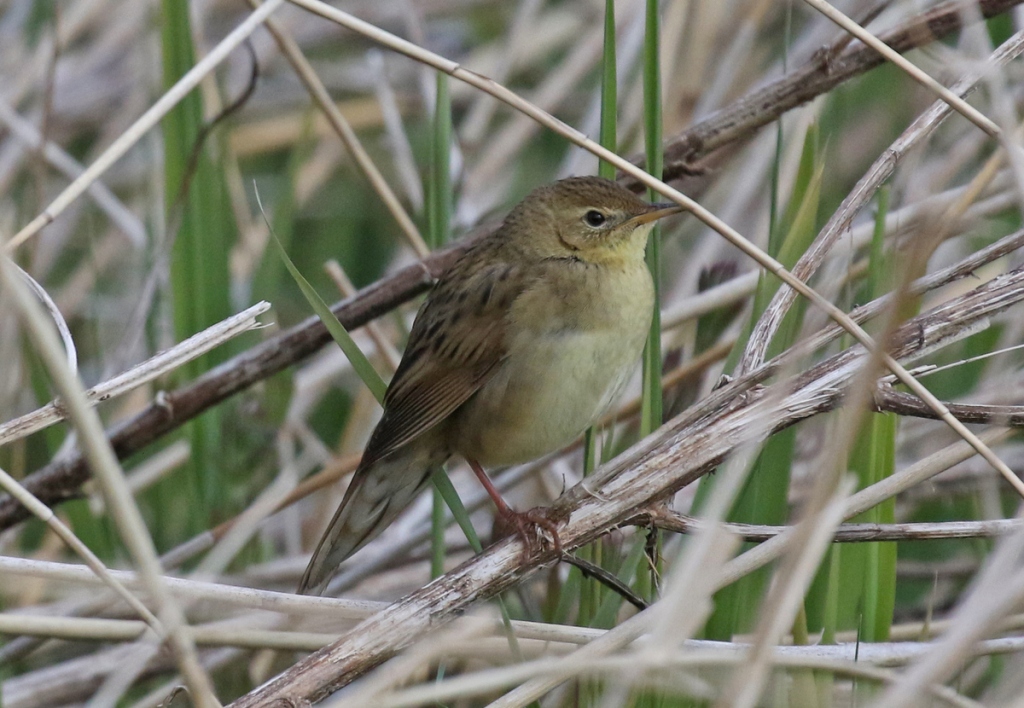
The Grasshopper Warbler stopped reeling and crawled down into the vegetation out of sight. When it came up again it was a bit further back, and it reeled again briefly from low in the reeds. Then it disappeared further back still, out of sight. We walked on, but we could still hear it reeling on and off behind us.
There were more Sedge Warblers and Reed Warblers along here – the former easy to see, but the latter typically keeping well down out of view. A Cetti’s Warbler shouted from the blackthorn across the road and a Common Whitethroat sang from the top of hedge above.
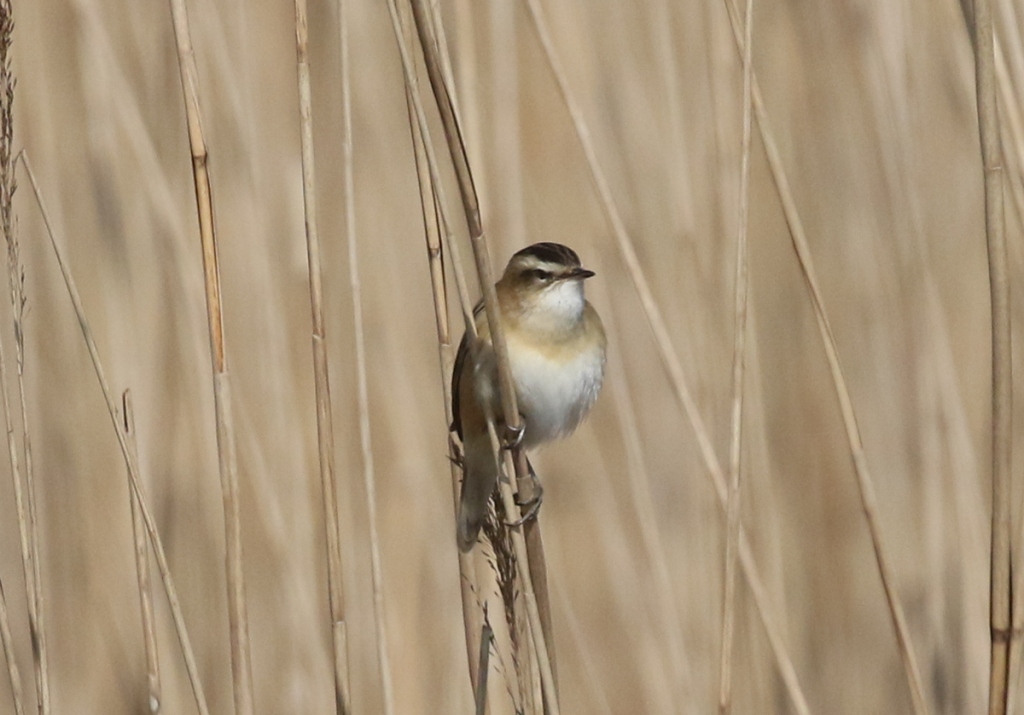
Up onto the East Bank, we noticed we had just missed a message about a White-tailed Eagle over the reserve. We scanned the sky, but there was no sign now – apparently it had gone through very quickly. Three Common Buzzards were circling very high above us. A Little Grebe was down on Don’s Pool, below the bank.
There were a couple of families of Lapwings, each with three small, fluffy chicks – little more than balls of fluff on legs. We heard a Yellow Wagtail call and looked over to see it land briefly among the cows, a smart canary yellow male. It didn’t stay long, but took off and carried on its way west. Yellow Wagtails used to breed along the coast here, but these days are just passage migrants.
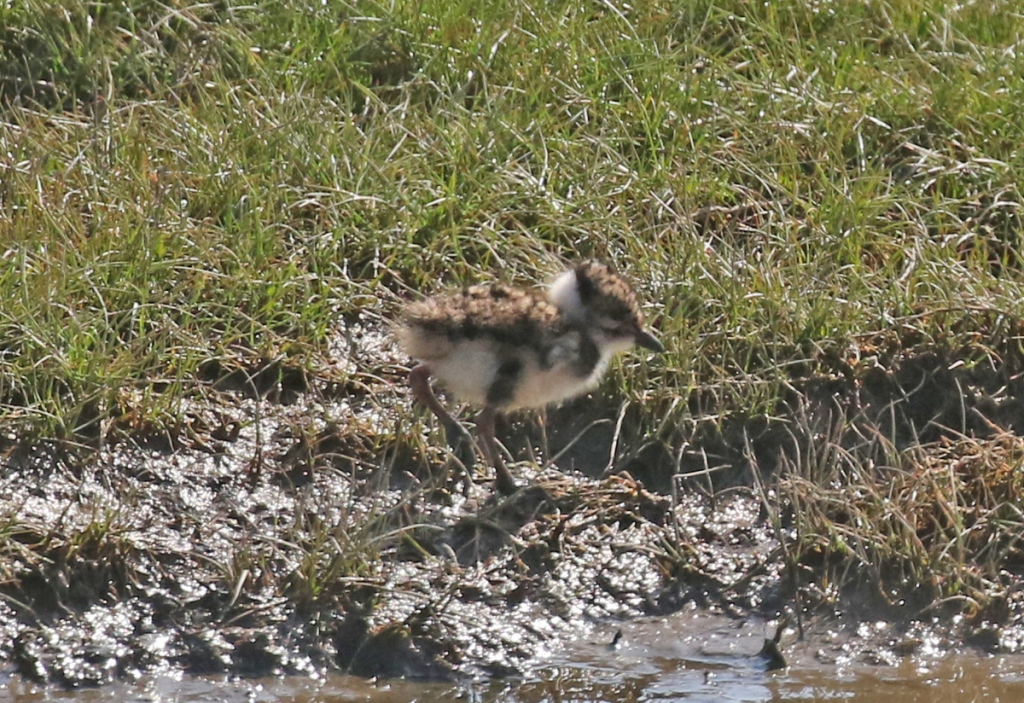
Further up, we stopped again to scan the Serpentine and Pope’s Pool. There was a good selection of ducks still, including several Wigeon and Teal, plus a scattering of Shoveler and Gadwall. We got a drake Gadwall in the scope to admire the complexity of its delicate patterning.
There were more Lapwings displaying here, along with several Redshanks, and two distant Bar-tailed Godwits in the longer grass further back. The islands on Pope’s Pool were adorned with the usual selection of loafing immature Great Black-backed Gulls and Cormorants.
There were lots more Sedge Warblers on the edge of the reedbed from the East Bank, and finally a Reed Warbler put in a brief appearance too. There were several Meadow Pipits in the grass and a steady passage of hirundines over, mainly Swallows and a few House Martins.
Up at the brackish pools, a Little Egret was feeding close to the path. A couple of smart drake Pintail were upending out on the water further back, showing off their long, pin-shaped tails. There were lots of Dunlin roosting around the edges of the islands on here too.
Over the other side of the path, there were more Dunlin on Arnold’s Marsh and several Ringed Plovers with them. A Turnstone dropped in on the shingle islands. Further back, we could see several more Bar-tailed Godwits and Curlews.
We had heard two Mediterranean Gulls calling as we walked up and they had appeared to drop towards the brackish pools, but there was no sign of them with the Black-headed Gulls here now. But when we heard more Mediterranean Gulls calling, we looked up to see four smart black-hooded adults flying in straight towards us. They came right overhead, their white wingtips translucent against the blue sky.
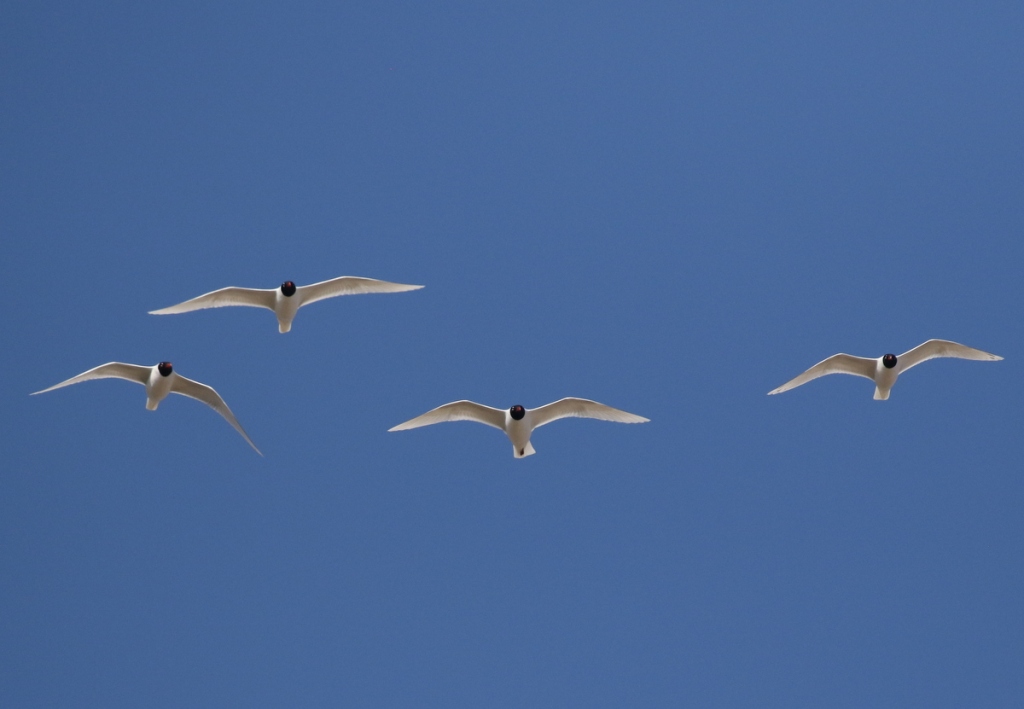
Continuing on to the beach, there were quite a few Sandwich Terns flying back and forth, with some quite close in today. We could even see the yellow tip to the long, black bill on one of them. A Great Crested Grebe in breeding plumage was more of a surprise – they do spend the winter on the sea here, but are less common offshore at this time of year.
As we walked back along the East Bank, we heard a Bearded Tit calling, and looked down to see a female briefly on the edge of the ditch below the bank. It flew up, and out over the reedbed, its long tail dipping behind it, before dropping deeper in. Two more Yellow Wagtails, this time females, were out among the cows now – a miracle they don’t get trodden on as they look for insects around the cow’s feet and noses.
Back along The Skirts path, two Marsh Harriers were displaying over the reedbed, the female towering up high, the male twisting and turning below before diving down into the reeds. A Common Buzzard came low overhead.
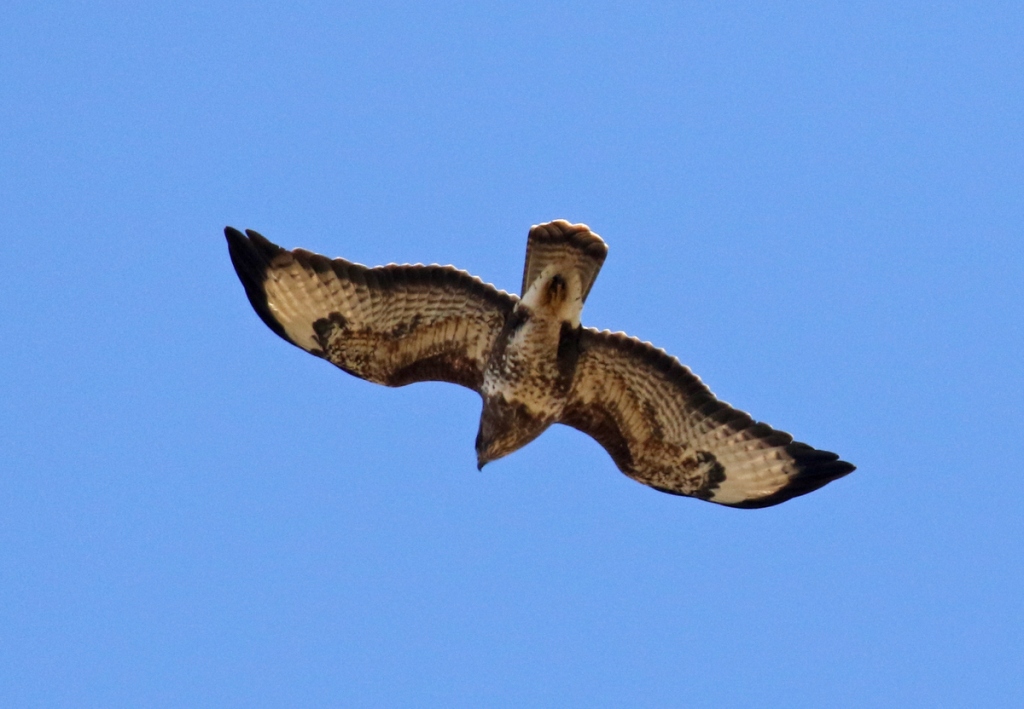
We went back to the Visitor Centre to make use of the facilities, and then decided on an early lunch out on the picnic tables in the sunshine. A Lesser Whitethroat was singing its rattling song just across the road, and when it flew over to the brambles in front of us, we could see it had been bathing and was still drying out.
After lunch, we drove west to Wells. We scanned the pools from the parking area first. We could see several Little Ringed Plovers and a moulting male Ruff on the pool west of the track. Two Brent Geese were out on the grass and more Lapwing chicks were hiding in there too.
As we walked down the track, we could see a Common Snipe in the rushes on the pool to the east. Stopping to scan, we found one of the lingering Jack Snipe too, in the rushes a bit further out. Smaller, shorter-billed, and with a different head pattern, lacking a central crown stripe compared to its commoner cousin. A very distant Common Sandpiper flew across and landed on the edge of the water over in the very furthest corner. A Grey Heron was lurking in the rushes close to the track, presumably eyeing up the ducklings and Lapwing chicks.
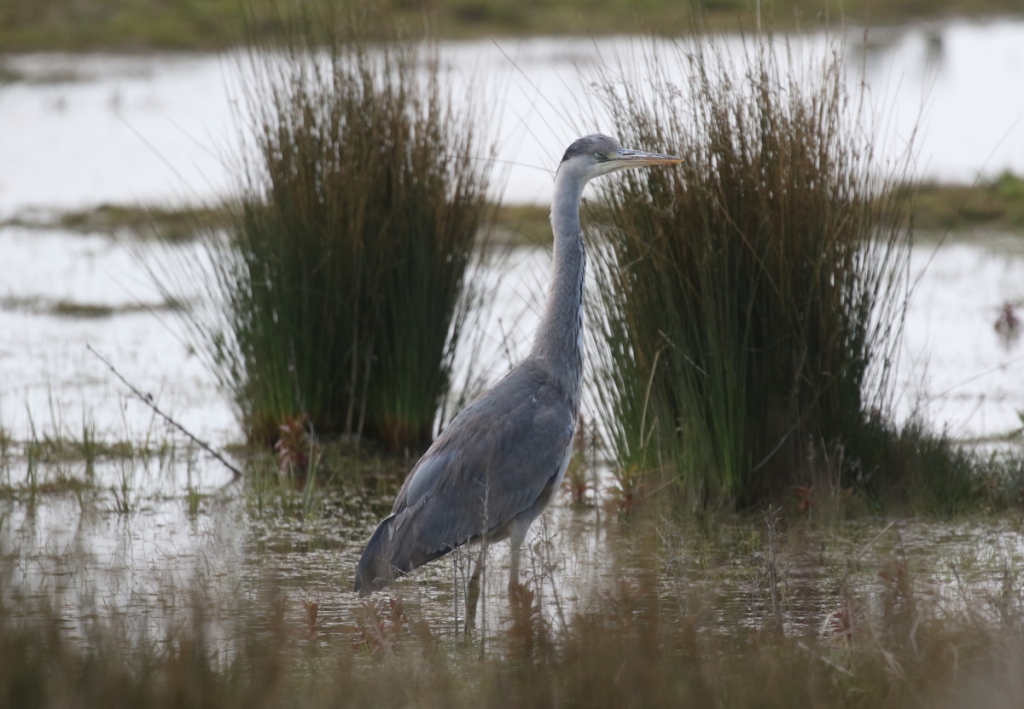
As we walked through the bushes beyond, a Sparrowhawk zipped through and a Red Kite drifted overhead. A Whimbrel flew over the seawall, heading out towards the harbour beyond. Scanning the western pool from the low bank, we could see another Common Sandpiper and another moulting male Ruff, before they were chased off by one of the Lapwings.
We climbed up onto the seawall for a better view. There were lots of Avocets nesting on the island, and more feeding on the saltmarsh the other side of the seawall. Three Avocets were having a disagreement on the mud, two were obviously a pair and engaged in some synchronised jumping between chasing after the third bird together. There were several Oystercatchers on the mud too.
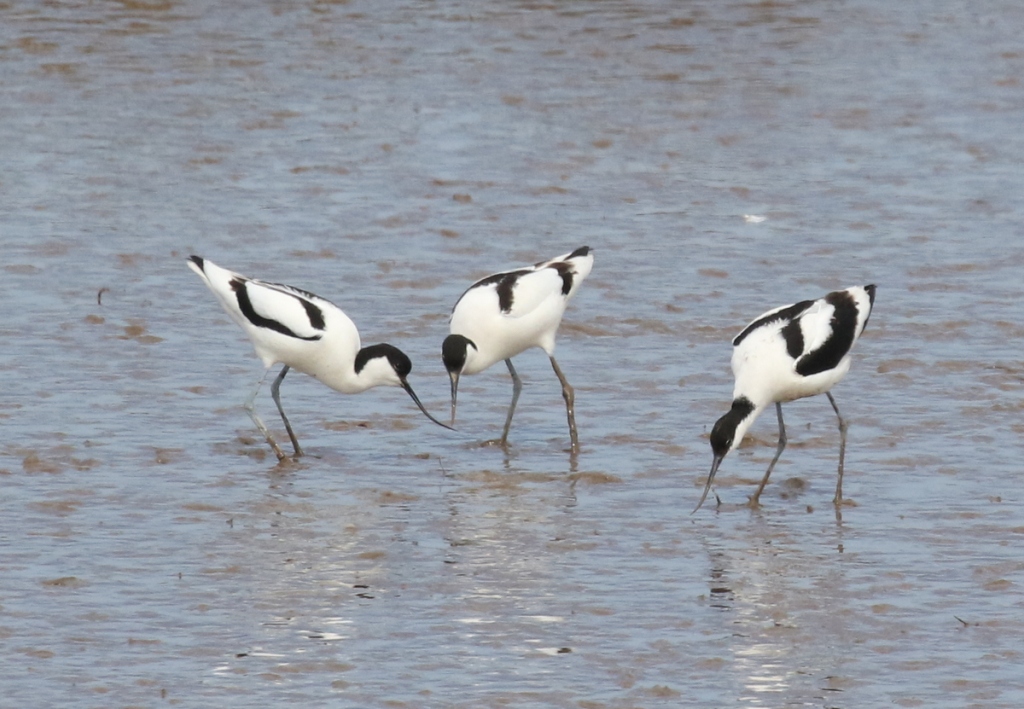
We could see a distant Spoonbill further out on the saltmarsh, although once it dropped down into one of the muddy channels to feed we could then just see its head and neck occasionally when it looked up. There were more Brent Geese out here too.
A male Marsh Harrier drifted in over the bushes and we could see it had something in its talons. The female circled up with it and we expected to see a food pass. But the male dropped down and landed in the grass and the female drifted off over the fields beyond. The male took off again and flew out over the fields too, and it was looking as if it wasn’t going to share what it was carrying until finally the female came close again and the male dropped its prey for the female to catch.
On our way back to the car park, a Lesser Whitethroat was singing in the bushes. A Spoonbill was now on the pool west of the track, a much better view than the one we had seen earlier, we could see the yellow tip to its black bill, its shaggy nuchal crest and the mustard yellow wash on its breast.
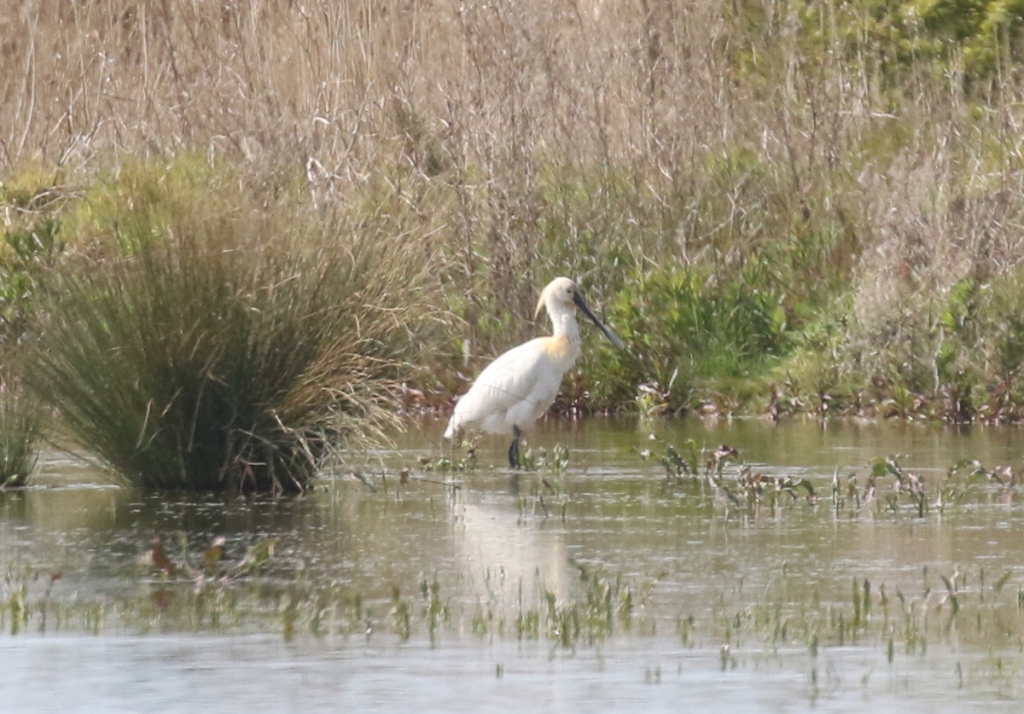
Our final destination for the remainder of the afternoon was Burnham Overy, hoping to catch up with some Ring Ouzels which had been here for the last few days. As we walked down the track towards the grazing marshes, we could hear a Common Whitethroat singing and a couple of Long-tailed Tits were in the hedge beyond.
A couple of Red-legged Partridges ran out from the grassy margin into the cultivated field on the way down. Beyond the stile, we stopped to scan the grazing marshes and the first thing we noticed were a pair of Grey Partridges trying to hide out on the short grass, looking rather like a couple of large clods of earth.
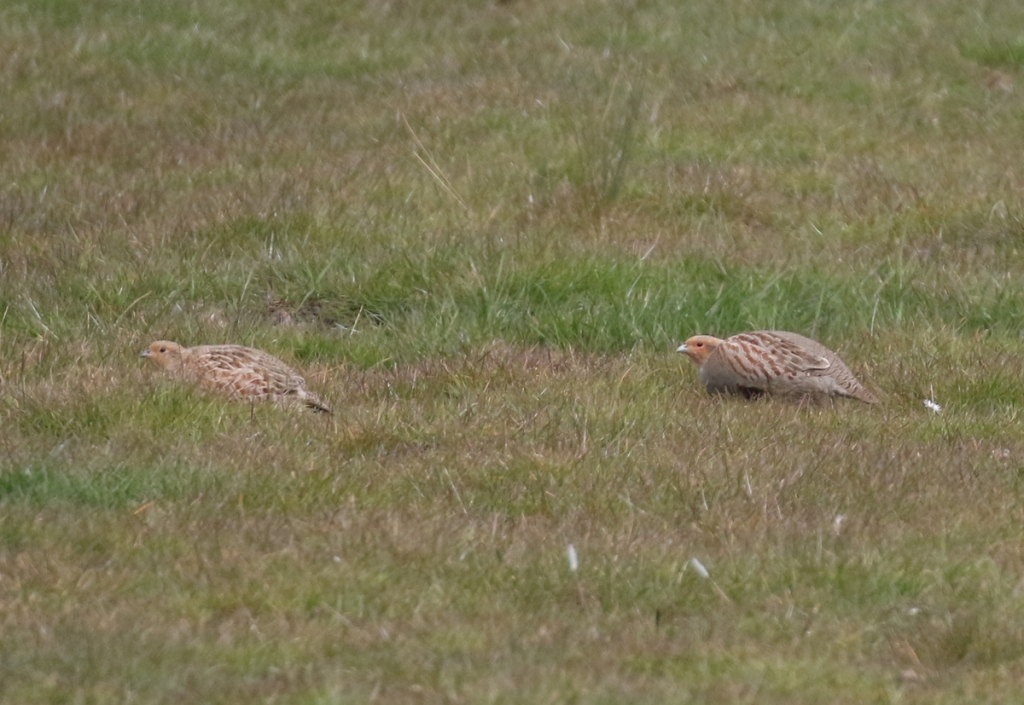
While we were looking at the Grey Partridges, we realised the Ring Ouzels were further back in the same field, just over a ridge and largely out of view. They were only briefly visible to the taller members of the group, before disappearing altogether into the dip in the ground. From further up along the track, we could look back and had a better view of the dead ground. Now we could see there were three Ring Ouzels, two males with bright white gorgets, and a duller browner female.
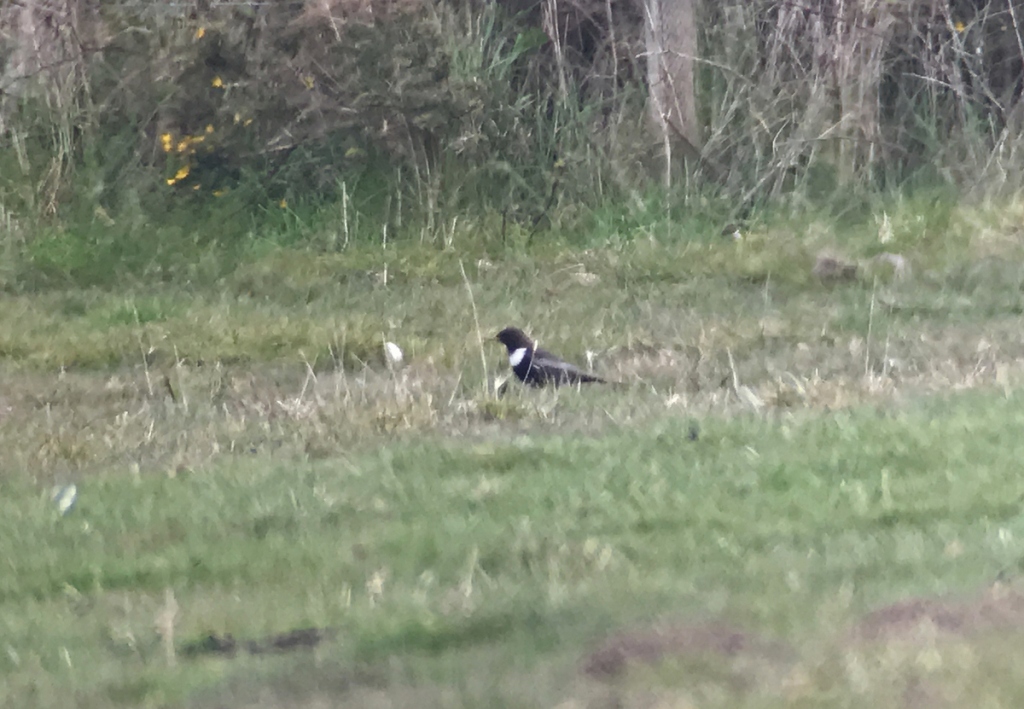
There were quite a few geese out on the grazing marshes, mainly Greylags, but looking through them carefully we found one lingering Pink-footed Goose. With most of the other Pinkfeet having long since flown back north on their way to Iceland for the breeding season, a few birds which were shot and winged during wildfowling here are largely unable to fly and will have to remain.
Three grey-backed White Wagtails were round the small pools further along by the track, and there were a few Skylark out on the short grass. On the other side, we could see a female Pochard and a Little Grebe. A nice close Little Ringed Plover here meant we could see its distinctive golden-yellow eyering through the scope.
We continued on and just up onto the seawall. The tide was low now, and we could only see the regular Avocets and Redshanks in the harbour. It was cold up here in the wind now and with our day almost at an end anyway, we set off back. A flock of at least 21 Whimbrel in the grassy fields by the stile now was a nice way to finish the day.
















